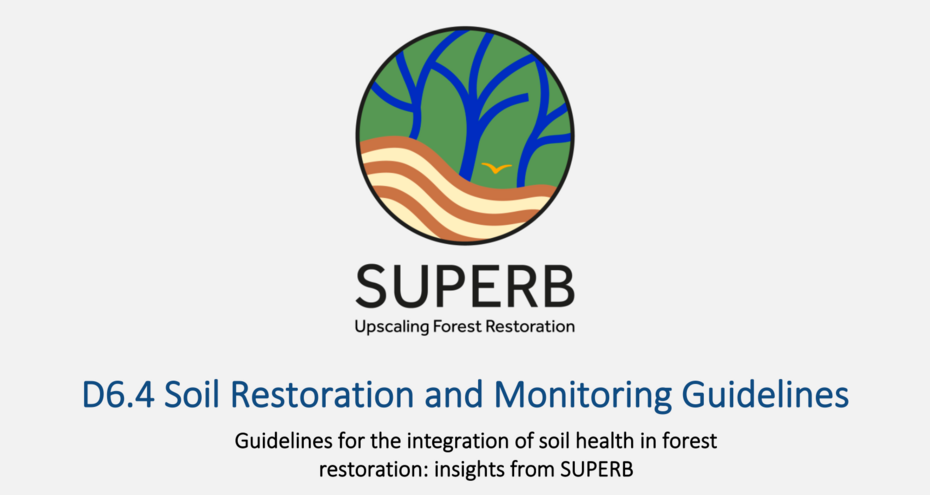Soil Restoration and Monitoring Guidelines
Guidelines for the integration of soil health in forest restoration: insights from SUPERB

Guidelines for the integration of soil health in forest restoration: insights from SUPERB
Forests are essential ecosystems, covering approximately 35% of Europe’s land area. They harbour a significant share of Europe’s terrestrial biodiversity and provide a wide range of ecosystem services critical to European citizens. However, forests across Europe are increasingly threatened by various forms of degradation, driven by multiple, often anthropogenic factors.
Many of these degradation processes originate or manifest within the below ground ecosystem compartment. Given that an estimated 3% of European soils are already degraded, decreasing soil health may represent a fundamental underlying cause of forest decline. Despite the growing recognition of the need for forest restoration, comprehensive guidelines that integrate soil health into monitoring and restoration practices remain limited. Within the framework of the EU Horizon 2020 SUPERB project, valuable insights have been gained into how restoration efforts - across varying scales and contexts - impact below ground ecosystem dynamics. This report provides a synthesis of the main findings derived from work conducted within the framework of the SUPERB project. Findings are illustrated in an integrated table discussing expected impacts of restoration measures on physical, chemical, and biological aspects of soil health. Additionally, a monitoring scheme is proposed for selected scalable indicators to support long-term assessment of soil health. The need for context-explicit restoration measures that take into account the inherent capacity of the soil is emphasised, rather than applying blanket treatments.
- Active Restoration
- Monitoring & Projecting
- Passive Forest Restoration

